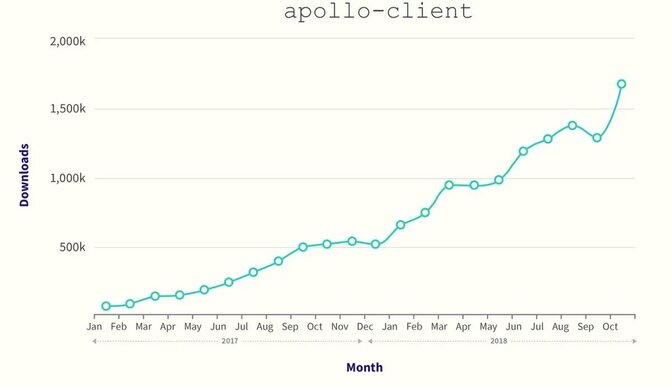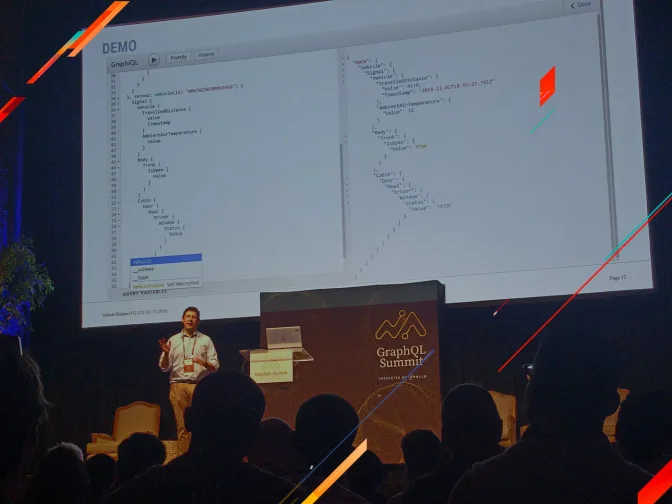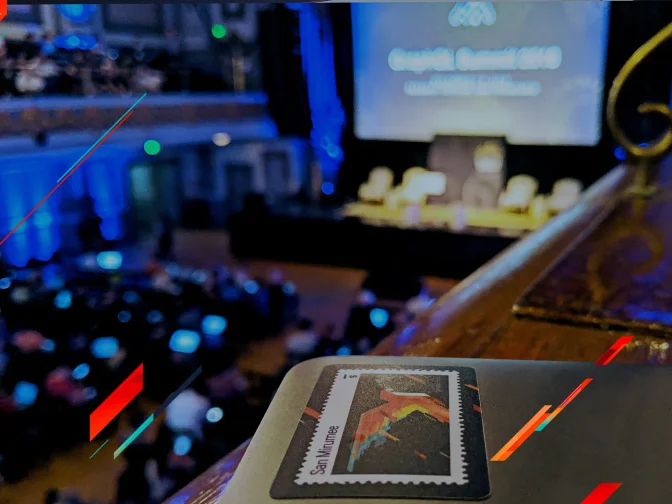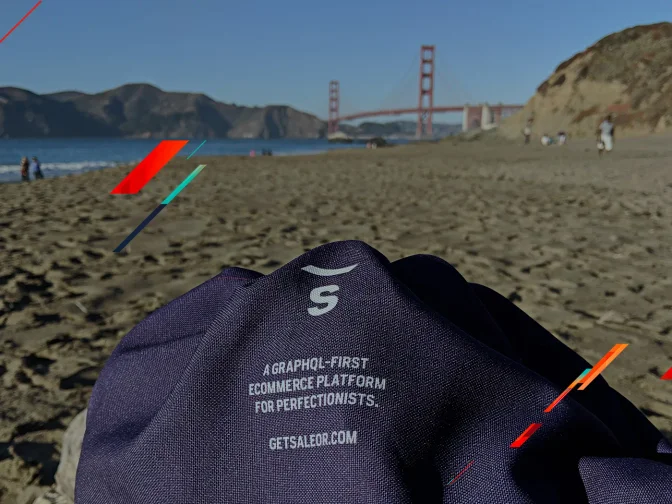What’s the main takeaway?
- GraphQL is now a developer mega-trend
- Major industries are taking notice of the technology
- The language is moving into a new phase of maturity
On November 7–8, three of our team made the long trip to San Francisco for the GraphQL Summit.
As we have transformed Saleor into a headless e-commerce solution using a GraphQL API, and we have recently launched our new Ariadne library for building GraphQL APIs, we are pretty much all in on the technology as a game-changer for the coming years — meaning we just had to make the trip to the US.
Was it worth the jetlag? You bet. We got to hear talks from AWS, Apollo, GitHub, Netflix, and Braintree, among many others. More than that, we felt the energy that has grown around GraphQL over the last couple of years, which has now transformed from enthusiasm for an emerging technology into confirmation that we absolutely chose the right path when we decided GraphQL was to be the driving force behind Saleor 2.0.
GraphQL is a mega-trend
We usually start these round-ups of events with a summary of some of the great talks. That will come, but there is no denying that the main story coming out of the GraphQL Summit is GraphQL itself.
Since the stable release in October 2016 the growth has been incredible. In fact, it is absolutely no exaggeration to say that GraphQL is a developer mega-trend, as Apollo pointed out with this graphic:

The numbers don’t lie. GraphQL is now a mega-trend.
Client downloads have grown from 10K a week to nearly half a million in the space of just two years. There has been an absolute explosion in interest for GraphQL and that also translates into the way people are talking about the technology.
Even in contrast with our experience in Berlin just a few months ago, people are no longer talking about implementations, they have shifted to discussing best practices. If there is ever a sign of a technology maturing, it is hard to find a clearer one.
The other indicator that GraphQL has rapidly matured is that we met people from companies like Sony, BMW, and Electronic Arts who had taken the time to be there and are seriously interested in what is happening. These companies are not traditionally ‘web apps’, so it is an important statement that they are taking notice.
Enterprise-level GraphQL implementations
Our feeling that GraphQL has moved firmly into the commercial space and is not just a technology for disruptive startups was confirmed by Felix Willnecker, a software engineer at BMW. He gave an interesting talk about how BMW internally uses GraphQL to create a single access layer for data coming from multiple sources such as databases, REST and SOAP APIs, including signals from millions of cars. His talk shows that GraphQL is not only for web apps and is being adopted in large enterprises. We might also be lucky enough to learn more about the results of their work, as Felix suggested to us that he might pop up at next year’s summit with a follow-up talk.

Felix Willnecker of BMW.
AWS has joined the party
From the technical side, Rohan Deshpande, Principal Engineer at AWS Cloud, showed a number of practical strategies on how to implement query bounding mechanisms. Limiting access to an API’s resources is one of the common issues that every public API has to face in order to protect itself against potential abusive requests. His talk was a signal that tech companies such as AWS care about GraphQL and want to engage with and contribute to the community by sharing their experiences and know-how.
Magic in front of our eyes
Perhaps the stand-out talk of the week was given by Adam Neary, Tech Lead, Web, at AirBnB. If we are honest, it probably wasn’t for everyone; it moved fast, took some giant leaps, and was pretty complex. But even if some couldn’t follow every twist and turn of the story, Adam is so funny and engaging that it didn’t seem to matter.
In a nutshell, he demonstrated the power that GraphQL provides to front-end developers, effectively giving them a lot of freedom by decoupling both back-end API implementation and UI. By building a fully-operational mockup of a website under 30 minutes, he proved that GraphQL is not only a convenient query language but also a modern and mature ecosystem that increases productivity for developers.
We got some time with Adam after his talk and he promised to write a short blog summarizing his talk for those who had missed some of the elements. Just a gentle reminder, Adam, we are still looking forward to reading that… :)

What a venue! The Regency Center in the heart of San Francisco.
Taking time out from the talks
We spoke to Felix Willnecker after his talk and were excited by his enthusiasm for the technology. It was also great to chat to Tim Hingston, Frontend Tech Lead at Apollo, who showed us one of the newest Apollo products, the Apollo Engine. He shared our opinion that there is so far no satisfactory tool for supporting Python in the GraphQL community and was really interested in what we are doing with Ariadne, which was a big boost for us. We don’t always seek the blessing of people in the industry for what we are working on, but it is always really great motivation when people whose work you respect agree that you are heading in the right direction.
And that was GraphQL San Francisco. But before our 15-hour flight home to Poland, there was one thing left for us to do…

A brief stopover in Weston-Super-Mare on the way home.
Lastly, thanks to the organizers for putting hosting a great event. The location was ideal and they really put together an exception bunch of speakers from across a range of industries and areas of expertise. It was everything we hoped for and more.